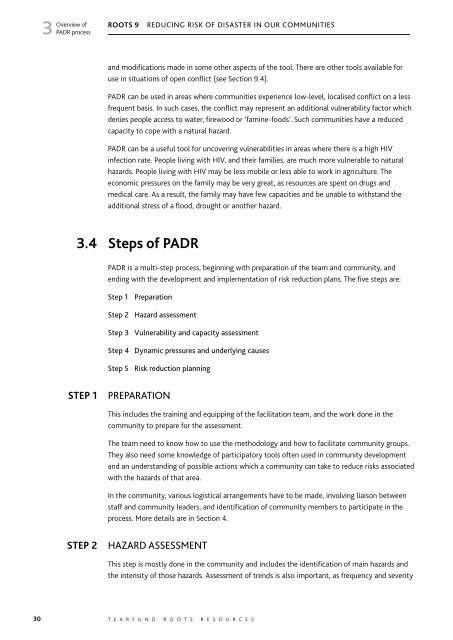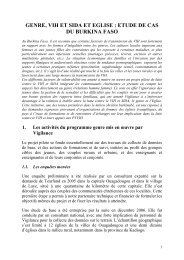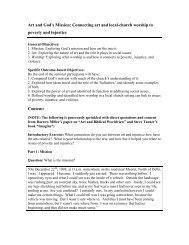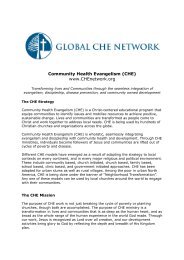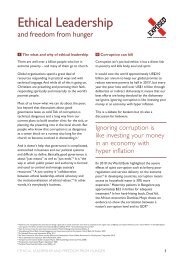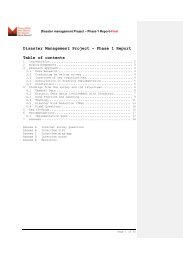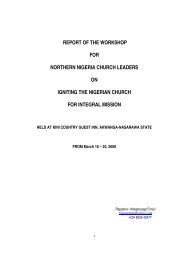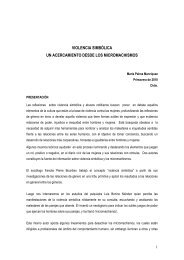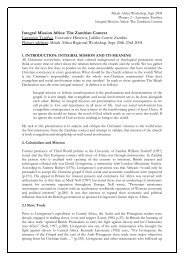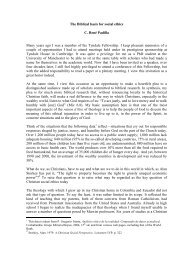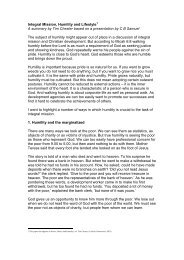Download - Micah Network
Download - Micah Network
Download - Micah Network
- No tags were found...
You also want an ePaper? Increase the reach of your titles
YUMPU automatically turns print PDFs into web optimized ePapers that Google loves.
Overview of3 PADR processROOTS 9REDUCING RISK OF DISASTER IN OUR COMMUNITIESand modifications made in some other aspects of the tool. There are other tools available foruse in situations of open conflict (see Section 9.4).PADR can be used in areas where communities experience low-level, localised conflict on a lessfrequent basis. In such cases, the conflict may represent an additional vulnerability factor whichdenies people access to water, firewood or ‘famine-foods’. Such communities have a reducedcapacity to cope with a natural hazard.PADR can be a useful tool for uncovering vulnerabilities in areas where there is a high HIVinfection rate. People living with HIV, and their families, are much more vulnerable to naturalhazards. People living with HIV may be less mobile or less able to work in agriculture. Theeconomic pressures on the family may be very great, as resources are spent on drugs andmedical care. As a result, the family may have few capacities and be unable to withstand theadditional stress of a flood, drought or another hazard.3.4 Steps of PADRPADR is a multi-step process, beginning with preparation of the team and community, andending with the development and implementation of risk reduction plans. The five steps are:Step 1 PreparationStep 2 Hazard assessmentStep 3 Vulnerability and capacity assessmentStep 4 Dynamic pressures and underlying causesStep 5 Risk reduction planningSTEP 1PREPARATIONThis includes the training and equipping of the facilitation team, and the work done in thecommunity to prepare for the assessment.The team need to know how to use the methodology and how to facilitate community groups.They also need some knowledge of participatory tools often used in community developmentand an understanding of possible actions which a community can take to reduce risks associatedwith the hazards of that area.In the community, various logistical arrangements have to be made, involving liaison betweenstaff and community leaders, and identification of community members to participate in theprocess. More details are in Section 4.STEP 2HAZARD ASSESSMENTThis step is mostly done in the community and includes the identification of main hazards andthe intensity of those hazards. Assessment of trends is also important, as frequency and severity30 T E A R F U N D R O O T S R E S O U R C E S


